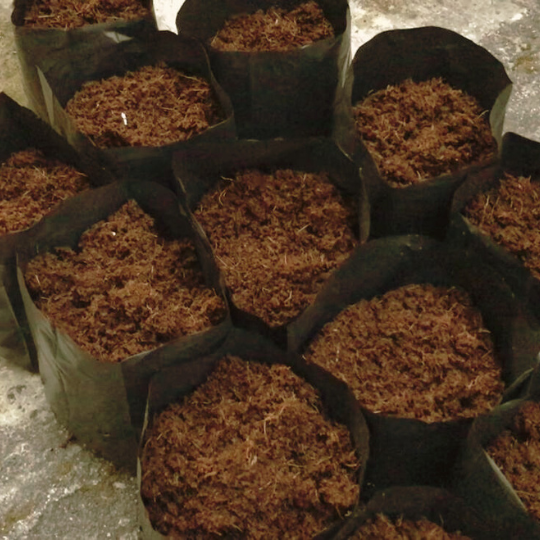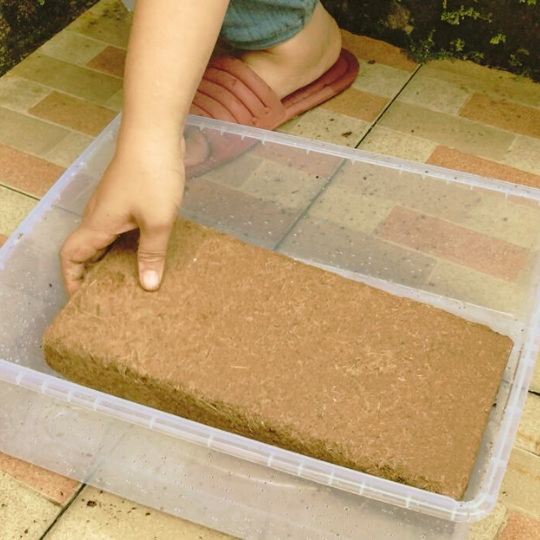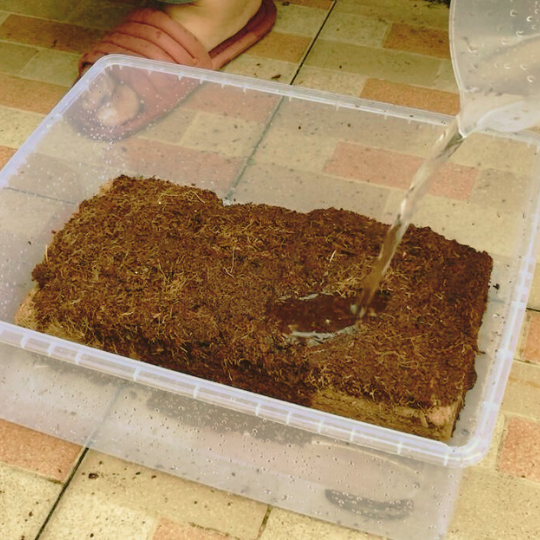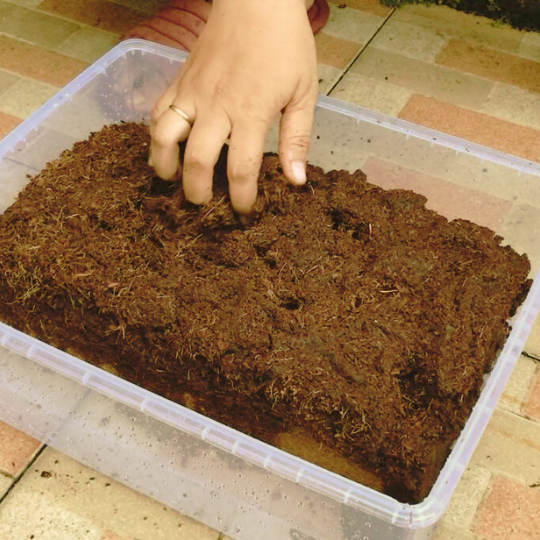Coco coir vs Peat moss for seed starting – Curious about the best choice for seed starting: coco coir or peat moss? Dive into this comparison to discover which option suits your gardening needs. Unveil the benefits, drawbacks, and key differences between these two popular growing mediums, coco peat and coir peat. Whether you’re a novice or seasoned gardener, this breakdown will help you make an informed decision for your next planting project. Ready to explore the world of coco coir and peat moss for optimal seed starting success?

Understanding Growing Mediums
What is Coco Coir
Coco coir, derived from coconut husks, is an eco-friendly and sustainable alternative to peat moss, offering excellent water retention properties that make it ideal for seed starting. Its ability to retain moisture well and resistance to mold and pests are significant advantages. However, coco coir does require buffering before use to address its high salt content. Despite this, it remains a fantastic medium for seedlings, promoting healthy root development by effectively holding water.
What is Peat Moss
Peat moss, a traditional growing medium derived from decomposed sphagnum moss, offers good aeration, which helps improve soil structure and prevent overwatering and root rot. Its natural acidity makes it particularly suitable for acid-loving plants. However, peat moss is a non-renewable resource and its extraction can negatively impact peatland ecosystems. Despite these concerns, peat moss remains beneficial for seed starting due to its ability to provide excellent aeration and support healthy root growth.
Pros and Cons
Benefits of Coco Coir
Coco coir is an excellent alternative to peat moss for seed starting due to its sustainable nature. It retains moisture well, promoting healthy root growth in plants. The structure of coco coir allows for optimal air circulation, preventing waterlogging.
- Retains moisture effectively
- Supports healthy root growth
- Provides optimal air circulation
Benefits of Peat Moss
Peat moss has been a popular choice for seed starting for years. It offers excellent water retention properties, keeping the soil consistently moist for seeds to germinate. Its acidic nature also benefits acid-loving plants.
- Excellent water retention
- Consistent soil moisture
- Acidic properties beneficial for specific plants
Drawbacks of Coco Coir
One of the main drawbacks of coco coir is its tendency to retain salts, which can be harmful to certain plants if not properly rinsed out before use. It may have a higher initial cost compared to peat moss.
- Salts retention potential
- Higher initial cost
Drawbacks of Peat Moss
While peat moss is effective at retaining moisture, its extraction process raises environmental concerns due to its impact on peat bogs. Once dried out, peat moss can become hydrophobic, making re-wetting challenging.
- Environmental concerns with extraction
- Hydrophobic nature when dried out

Key Factors for Seed Starting
Saturation and Drying
Coco coir retains moisture well, aiding seed germination by providing consistent saturation. In contrast, peat moss can sometimes dry out too quickly, affecting seedling growth.
- Coco coir’s water retention benefits seeds during the critical germination phase.
- Peat moss may require more frequent watering due to its tendency to dry out rapidly.
Acidity and Nutrient Uptake
Coco coir has a neutral pH, ideal for most plants, while peat moss is acidic, requiring lime to balance pH levels for optimal growth.
- The neutral pH of coco coir promotes healthy root development in seedlings.
- Peat moss’s acidity can hinder nutrient uptake, affecting plant growth if not managed properly.
Decomposition and Reusability
Coco coir, being a byproduct of coconut processing, decomposes slowly, providing long-lasting support to plants. On the other hand, peat moss breaks down faster but can be reused with proper treatment.
- Coco coir’s slow decomposition ensures sustainable use over multiple growing seasons.
- Peat moss’s quicker breakdown rate necessitates replenishment, impacting its long-term sustainability.
Plant Maturation
Seedlings grown in coco coir often exhibit robust growth due to its aeration properties, leading to healthier and sturdier plants compared to those started in peat moss.
- Coco coir’s excellent aeration facilitates strong root development in young plants.
- Plants nurtured in coco coir tend to mature into vigorous specimens, showcasing better overall health and resilience.

Sustainability Considerations
Environmental Impact of Coco Coir
Coco coir, derived from coconut husks, is renewable and biodegradable, reducing waste in landfills. Its production requires less water compared to peat moss.
- Renewable material
- Biodegradable nature
- Reduced water consumption during production
Coco coir’s extraction process has minimal environmental impact, as it utilises by-products that would otherwise go to waste. This sustainable practice supports ecosystem balance.
Environmental Impact of Peat Moss
Peat moss harvesting involves ecosystem disruption and releases stored carbon into the atmosphere, contributing to climate change.
- Ecosystem disruption
- Carbon release causing climate change
The extraction of peat moss also leads to the destruction of peat bogs, which are crucial habitats for diverse plant and animal species.
Long-Term Sustainability
Opting for coco coir over peat moss promotes long-term sustainability by reducing the demand for non-renewable resources and supporting eco-friendly practices.
- Reduced demand for non-renewable resources
- Support for eco-friendly practices
Choosing sustainable alternatives like coco coir aligns with the global push towards environmental conservation and responsible resource management.
Choosing the Right Medium
Assessing Your Needs
To select between coco coir and peat moss, consider factors like water retention and nutrient content. Assess your seedlings’ requirements for optimal growth.
- Consider the porosity of each medium
- Evaluate the ease of use for your gardening routine
Specific Plant Requirements
Different plants thrive in varying growing conditions. Research the specific needs of your plants to determine which medium suits them best.
- Some plants prefer well-draining substrates
- Others require higher moisture retention
Budget and Availability
When deciding on a growing medium, take into account your budget constraints and the availability of both coco coir and peat moss.
- Cost-effectiveness: Compare prices per volume
- Local availability: Check nearby stores or online suppliers

Closing Thoughts
Seed starting is a crucial phase in your gardening journey. Understanding the differences between coco coir and peat moss can help you make an informed decision. Consider the pros and cons, key factors, and sustainability aspects outlined here to choose the right medium for your seeds. By selecting a medium that aligns with your values and gardening goals, you set yourself up for success from the very beginning.
Make sure to reflect on your specific needs and the environmental impact of your choice. Your commitment to sustainable practices not only benefits your plants but also contributes to a greener future. Experiment with different mediums, observe the results, and adjust your approach accordingly. Happy planting!
Frequently Asked Questions
What are the key differences between coco coir and peat moss as seed starting mediums?
Coco coir is a sustainable by-product of coconut processing, retains moisture well, and has a neutral pH. Peat moss is acidic, non-renewable, and may compact over time. Consider sustainability, pH levels, and water retention when choosing.
Which medium is more environmentally friendly for seed starting, coco coir or peat moss?
Coco coir is considered more sustainable as it comes from a renewable resource (coconuts) and can be reused multiple times. Peat moss, on the other hand, is non-renewable and its extraction can harm peatlands. Opting for coco coir aligns better with eco-conscious practices.
How do coco coir and peat moss differ in terms of nutrient content for seedlings?
Coco coir is low in nutrients but provides good aeration for roots. Peat moss has minimal nutrients but excellent water retention properties. To boost nutrient levels, consider adding compost or fertilisers to both mediums during seed starting.
Can coco coir and peat moss be used interchangeably for all types of seeds?
While both coco coir and peat moss are versatile seed starting mediums, their differing properties may make one more suitable than the other depending on the plant species. Factors like water requirements, pH preferences, and nutrient needs should be considered when selecting the medium.
How should I prepare coco coir or peat moss before using them for seed starting?
For coco coir, hydrate it with water to expand before use. Fluff it up to ensure good aeration. Peat moss should be moistened thoroughly to prevent it from repelling water. Both mediums benefit from being pre-moistened to create an ideal environment for seed germination.
In conclusion, if you are eager to delve deeper into the details of coir products, feel free to explore our website at https://cocopeatcocofiberaustralia.com/. Additionally, for direct and instant connection with our team, you can reach us through the following WhatsApp link https://wa.me/61412773364. We look forward to providing you with the information and assistance you need.
